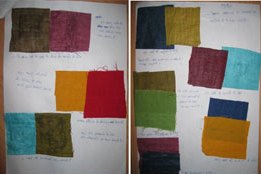
Crafts, Handlooms, Art, Craftspersons/ Artisanal
Lost Wax Metal Casting of Chattisgarh
McComb, Jessie F.
May, 2019
"...like the tribal sculptors, who praise the 'direct' method of casting (hollow casting) illustrated in this exhibition, it bears also a deeper, more anxious significance for the artist, since in the interval between the drawing off (of the wax) and the pouring in (of the metal) his creation has become void and can be recovered only by a successful pour; a failure means that all his work is lost with the wax (since the clay envelope, and with it its negative impression of the wax, are necessarily broken up), and he must begin again, perhaps never again to recover his original inspiration. We may say, with reason on our side, that the act of creation in lost-wax casting consists in the modeling of wax, yet we need not be surprised if to the tribal sculptor with his traditional philosophy of vital force, and perhaps to the true artist everywhere, the moment of pouring seems like a mystical act of procreation..."
From Introduction by William Fagg to a catalogue of an exhibition - Lost Wax Metal Casting on the Guinea Coast. Institute of Contemporary Art, London, March 1957
Lost wax or cire perdue metal casting is practiced in many areas in India, but the folk brasses cast with this method in the Bastar region of middle India contain certain tribal elements that set them apart. Bastar is located in the southern region of Madhya Pradesh where the state borders Andra Pradesh. The craftsmen of this area belong to the Ghadwa or Gharua Scheduled Caste, also known as Kaser, Ghasia, Mangan and Vishwakarama, although most of these names are self-proscribed by the craf...
This is a preview. To access all the essays on the Global InCH Journal a modest subscription cost is being levied to cover costs of hosting, editing, peer reviewing etc. To subscribe, Click Here.
ALSO SEE
Curriculum for Design Education of Craftspersons
Agarawal, Megha
Framing the Fluid Multiple Perspectives on Bhar...
Johar, Navtej



